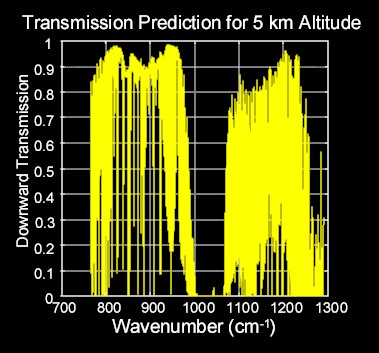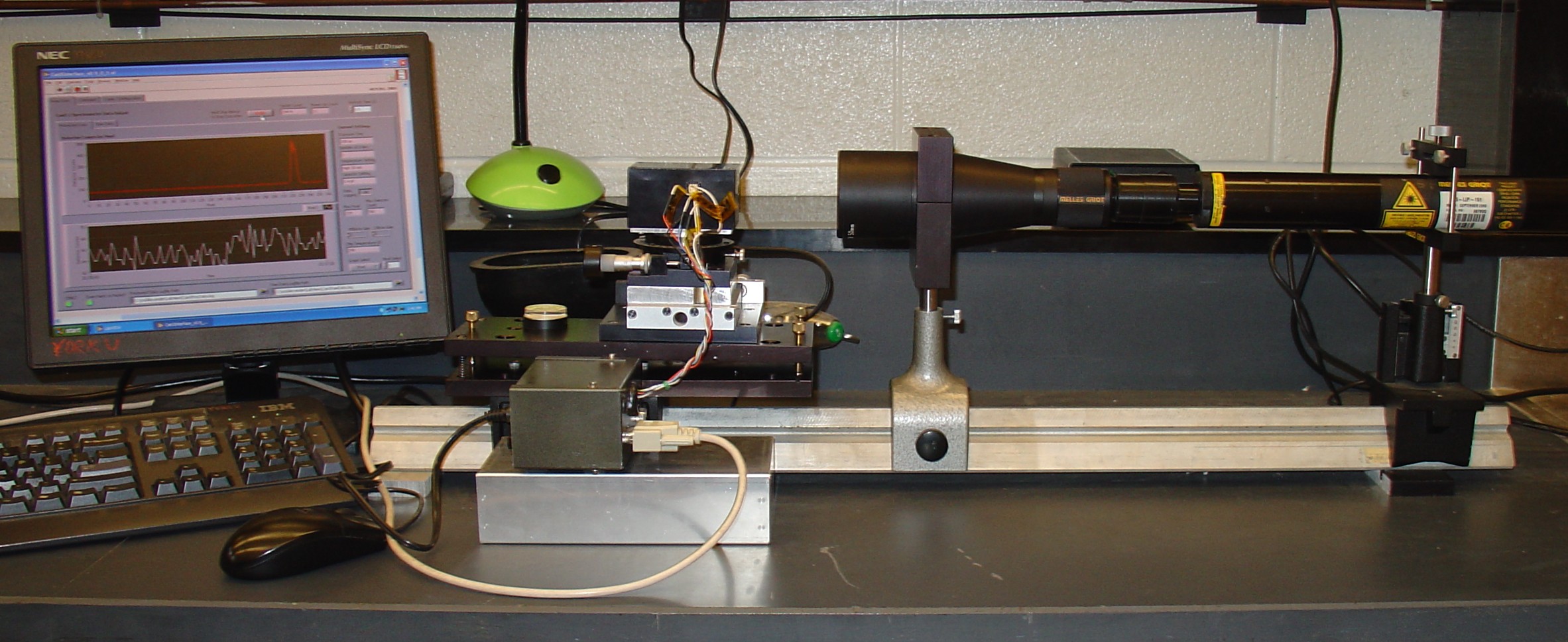Optical Calibration and Spectroscopy Laboratory
 Optical interferometer
and camera calibration systems provide a means for researchers to calibrate
sensor performance and reference frames that are utilised in the development and
characterisation of optical space systems. The laboratory also investigates
quantities methods in radiative transfer and spectroscopy using custom developed
software tools including
the Genspect radiative transfer
tool.
Optical interferometer
and camera calibration systems provide a means for researchers to calibrate
sensor performance and reference frames that are utilised in the development and
characterisation of optical space systems. The laboratory also investigates
quantities methods in radiative transfer and spectroscopy using custom developed
software tools including
the Genspect radiative transfer
tool.

Laser
Calibration of Argus Instrument, YorkU.
Selected Publications
2007
B. M. Quine,
V. Tarasyuck, H. Mebrahtu and R. Hornsey, Determining Star Image Location: A new
Sub-Pixel Interpolation Technique to Process Image Centroids, Computer
Physics Communications, 177, 700-706.
Abstract:
We develop a theoretical methodology to estimate the location of star centroids
in images recorded by CCD and active pixel sensors. The approach may be
generalized to other applications were point-sources must be located with high
accuracy. In contrast with other approaches, our technique is suitable for use
with non-100% fill ratio sensors. The approach is applied experimentally to two
camera systems employing sensors with fill-ratios of approximately 50%. We
describe experimental approaches to implement the new paradigm and characterize
centroid performance using laboratory targets and against real night-sky images.
Applied to a conventional CCD camera, a centroid performance of 11.6 times the
raw pixel resolution is achieved. Applied to a camera employing an active-pixel
sensor a performance of 12.8 is demonstrated. The approach enables the rapid
development of autonomous star-camera systems without the extensive
characterizations required to derive polynomic fitting coefficients employed by
traditional centroid algorithms.
2007 M. Toohey, B. M. Quine, K. Strong, P. F.
Bernath, C. D. Boone, A. I. Jonsson, C. T. McElroy, K. A. Walker and D.
Wunch.
Balloon-Borne radiometer measurement of Northern Hemisphere mid-latitude
stratospheric HNO3 profiles spanning 12 years, Atmos. Chem. Phy. Discuss.,
7, 11561-11586.
2005 Jagpal, R.; Quine, B.; Caldwell, J.,
Separating Extrasolar Planetary Photons from Stellar Ones, American
Astronomical Society, DPS meeting 37, 31.07; Bulletin of the American
Astronomical Society, Vol. 37, p.684.
Abstract: Spatial resolution of the light reflected by extra-solar
planets from the light of their parent stars is financially and technically
challenging. However, the properties of one of the most common types of
extra-solar planets found to date, "hot Jupiters", suggest another
approach to their study. The majority of extrasolar planets have been discovered
through an analysis of stellar spectra in order to detect velocity variations
induced by the presence of large, close-orbiting planets. However, the close
proximity of hot Jupiters to their stars results in detectable brightness levels
of reflected planetary light, about 10,000 times Jupiter's reflected light.
Thus, the spatially unresolved stellar spectra also contain light reflected
directly from the visible level of these planetary bodies. The orbital
velocities and resultant Doppler shifts of the planets are about 1000 times
greater than the stellar "wobble". The magnitude and phase of the
Doppler shifts of the planets can be found from the original stellar wobble. We
are investigating practical considerations and methodology needed to extract
planetary information from the known Doppler variation of the reflected
planetary signal from that of the parent star, in the presence of noise. Our
approach employs a Monte-Carlo simulation of the combined star-planet
observation in order to predict accurately the time variation of the expected
combined spectra. We propose to use this analysis to develop a means to separate
a planetary spectrum from the stellar one in order to investigate planetary
inhomogeneity, including albedo variations across the disk of the planet, if
they exist, and to determine detailed planetary spectra in order to infer
atmospheric composition.
 2002 B. M. Quine and J. R. Drummond.
GENSPECT: A
Line-by-Line Code with Selectable Interpolation Error Tolerance, J. Quant.
Spectrosc. & Radiat. Transfer, 74, pp. 147-165.
2002 B. M. Quine and J. R. Drummond.
GENSPECT: A
Line-by-Line Code with Selectable Interpolation Error Tolerance, J. Quant.
Spectrosc. & Radiat. Transfer, 74, pp. 147-165.